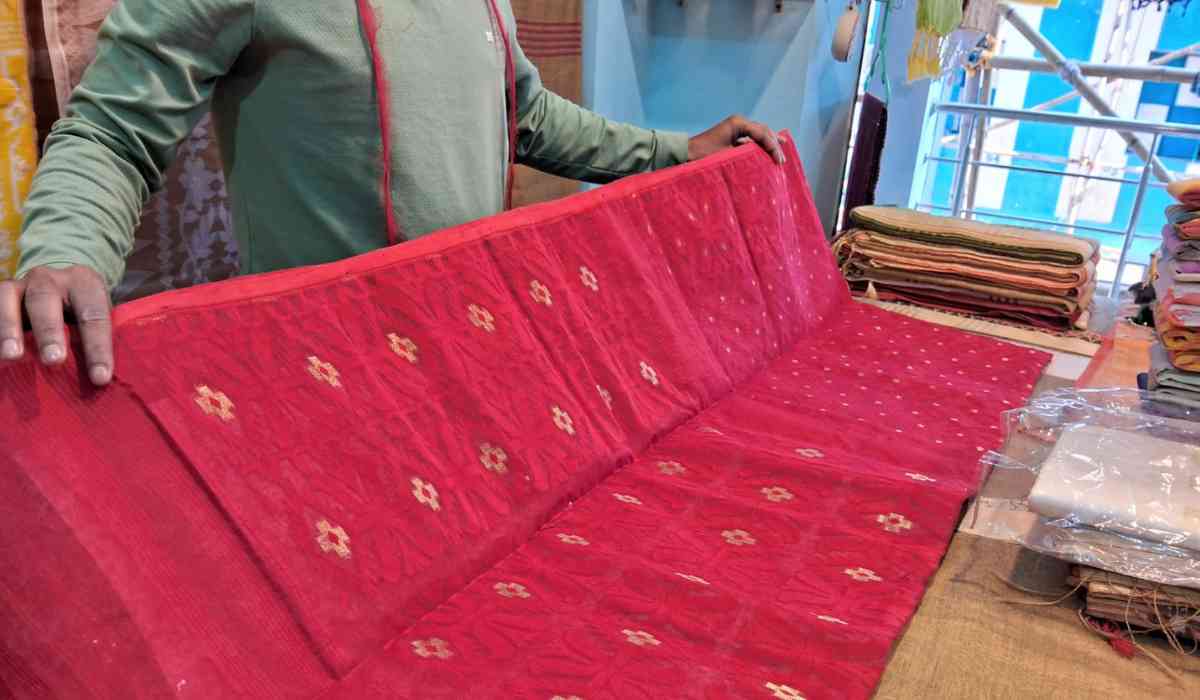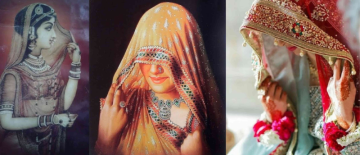In a recent development, the Indian Ministry of Culture has sparked controversy by asserting that West Bengal is the birthplace of the exquisite traditional handwoven "Tangail saree." Internet users are outraged by this claim, especially in Bangladesh, where the Tangail saree is commonly thought to be a product from the Tangail district.
On Thursday, February 1, the Ministry celebrated the Tangail saree on Facebook, highlighting its exquisite texture, vivid colors, and complex Jamdani designs as a representation of rich cultural history. The statement went on to say, "Each Tangail saree is a testament to skilled craftsmanship, seamlessly weaving together tradition and elegance."
Tangail Saree Controversy
However, Bangladeshi internet users have not taken kindly to the statement, with many voicing their disapproval in the comments section. It has been pointed out by some that the district in Bangladesh is where the word "Tangail" comes from, which makes it unlikely that the saree originated in West Bengal.
The issue follows West Bengal Chief Minister Mamata Banerjee's statement, in which she hailed the registration and recognition of three handloom saree goods from West Bengal, namely Tangail of Nadia and Purba Bardhaman. This development intensified the discussion on the origins of the saree.
Three handloom saree items of West Bengal, namely Tangail of Nadia and Purba Bardhaman, and Korial & Garad of Murshidabad and Birbhum, have been registered and recognized as GI products.
I congratulate the artisans for their skills and achievements. We are proud of them. Our… — Mamata Banerjee (@MamataOfficial) January 4, 2024
The Indian Ministry's assertion was sharply contested by Gazi Md Rezaul Karim, member (O&M) of the Bangladesh Handloom Board, who declared categorically that the Tangail saree is a Bangladeshi product. He underlined that it is untrue that it originated in West Bengal. He mentioned the prospect of objecting to India's GI tag for the saree, even though he was unable to clarify if the board is aware of India's claim or the GI tag for the Tangail saree.
_1707073784.jpeg)
Tangail saree: Cultural Significance
The Tangail saree is culturally significant in Bangladesh, as it represents one of the country's oldest cottage businesses. Its history of weaving extends back to the British era, and the late nineteenth century saw significant growth in this industry. Tangail saree production is an ongoing endeavour for several communities in Bangladesh, most notably the Pathrail Basak community in Tangail.
Notably, during the Liberation War of 1971 and the division of Bangladesh, a significant number of handloom craftsmen fled to India. They made their home in West Bengal, where they were instrumental in the spread of the Tangail saree throughout the area.
It will be interesting to observe if diplomatic channels are used to resolve the competing claims in the growing discussion about the origin of the Tangail saree and whether Bangladesh will formally object to India's GI tag for this garment of cultural significance. The controversy underscores the intricate relationship of culture, legacy, and geopolitics in the world of traditional handwoven textiles.
Ⓒ Copyright 2024. All Rights Reserved Powered by Vygr Media.






















